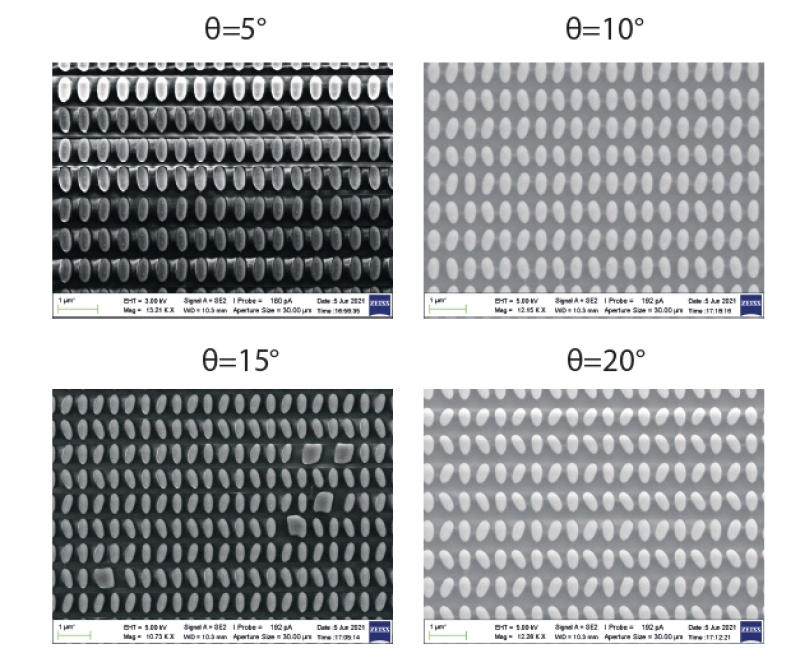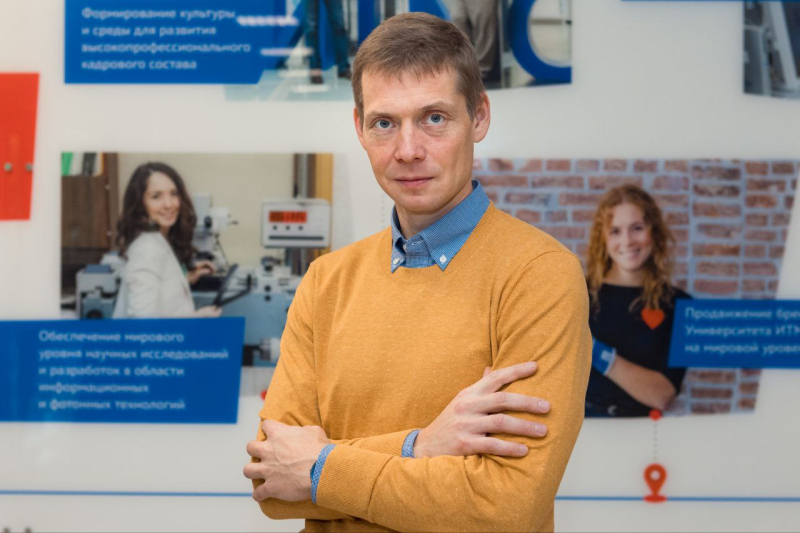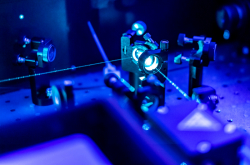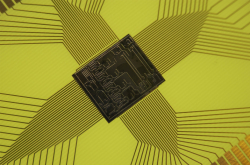Metamaterials – materials that act as resonators, increasing the interaction of light and matter – are used in physics to detect various substances with optical sensors. Molecules in a substance interact with a specific wavelength. Resonators maintain a given wavelength for longer periods of time, thus increasing a detector’s sensitivity – the possibility that it will detect a molecule.
In order to make detectors even more sensitive, researchers around the world are working to increase the efficiency of light control in metamaterials. One solution is a perfect resonator that will hold light for indefinite periods of time. However, such a device would be useless in practice because it won’t be permeable to light, making it impossible to change the optical signal.
That’s why now scientists try to distort the perfect resonator in such a way that the metasurface at its core lets the necessary amount of light in and out. The more distortions there are, the more light will permeate the metasurface.
Usually, metasurfaces are made from identical particles ordered in a specific way. This means that in order to distort a metasurface, the researchers need to shift the location of all particles, which is a complex and rarely convenient process.
The solution from ITMO
A group of physicists from ITMO, the Ioffe Institute, and Zhejiang University (China) have suggested another way to control the connection of the resonator and the surrounding environment. Instead of changing the location of all particles, they move only a part of them but at a greater angle. This produces the same effect as when all particles shift their locations. At the same time, the technology requires less precision, meaning that it can be completed using cheaper equipment.
In their approach, the physicists consider each element of the metasurface as an antenna that receives light and transmits it into the structure. By deforming a part of the particles, the researchers can make them act as such antennae.

In order to test their approach, the physicists created metasurfaces using lithography. They put thin silicon films with a protective polymer layer inside an acid environment; there, the acid destroyed the silicon in places where it wasn’t protected by the polymer. Then, the researchers radiated the resulting silicon structures with light and measured light reflection and transmission. Electron microscopy images courtesy of the researchers
What’s next
The new method will increase detector sensitivity and make lasers smaller, thus cutting down on their energy use. Moreover, it will make laser research more accessible by lowering the requirements for the necessary experimental environment. Additionally, the results of the study can be used to create various nonlinear effects that can lay the foundation for more compact wavelength converters on a chip. Such devices are used in fiberoptic communication to increase the volume of information transfer.
“We are planning to continue our research and apply the new approach to circularly polarized light – in those cases when the electromagnetic field moves along a spiral instead of a straight line. This light interacts well with molecules curled into spirals. Depending on the direction of the spiral, a substance made of the same molecules can be a poison or a medication for humans, which is why it is important to be able to tell them apart. If we can create such metasurfaces that maintain the electromagnetic light spiraling in only one direction, we will be able to tell these molecules apart. This will be highly useful in sensorics,” shared Mikhail Rybin, an author of the paper and a senior researcher at ITMO’s Faculty of Physics.

Mikhail Rybin. Photo by ITMO.NEWS
This research project is supported by the Russian Science Foundation.
Reference: Sergei Li, Binze Ma, Qiang Li and Mikhail Rybin. Antenna-Based Approach to Fine Control of Supercavity Mode Quality Factor in Metasurfaces (Nano Letters, 2023).





